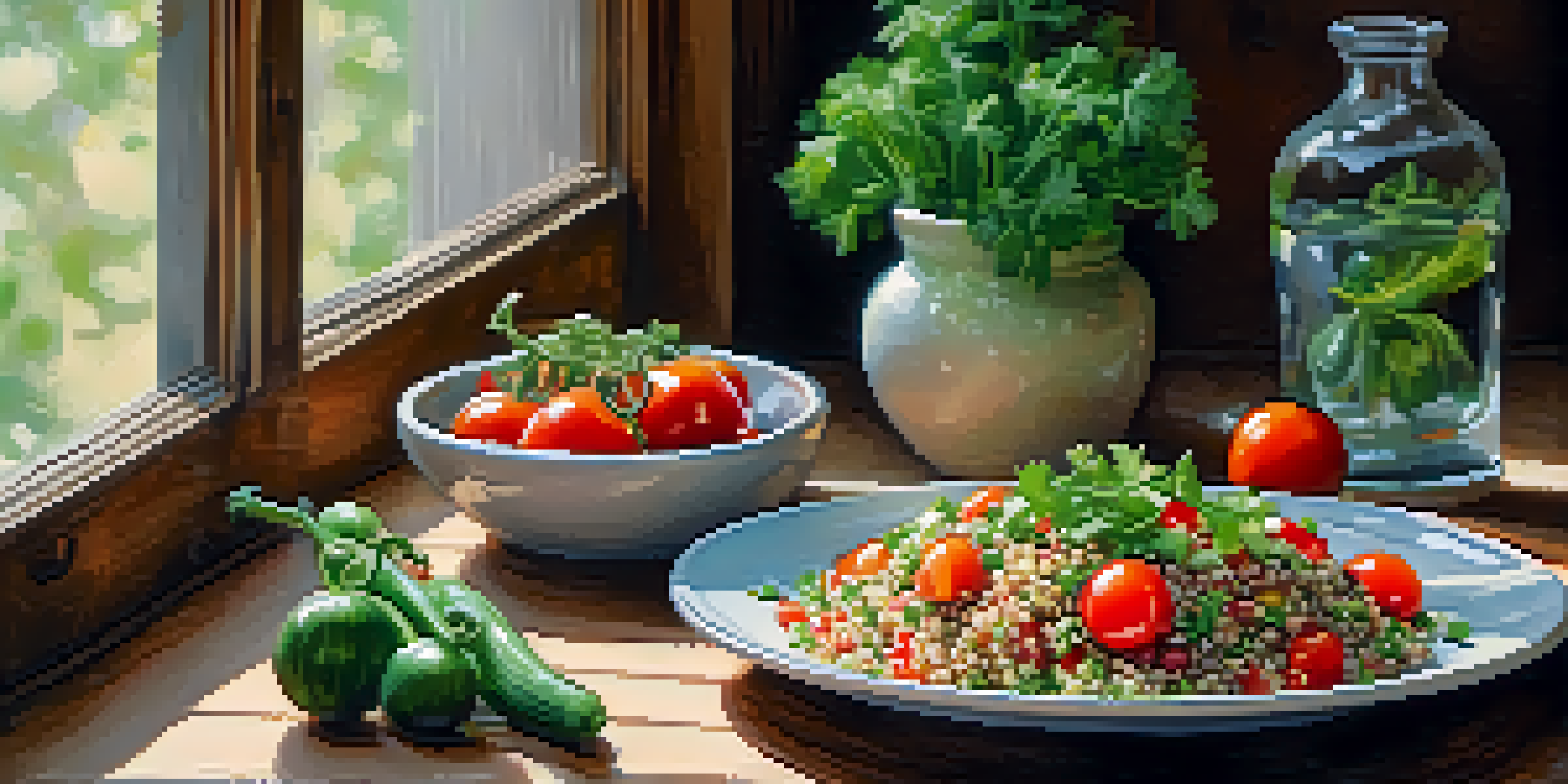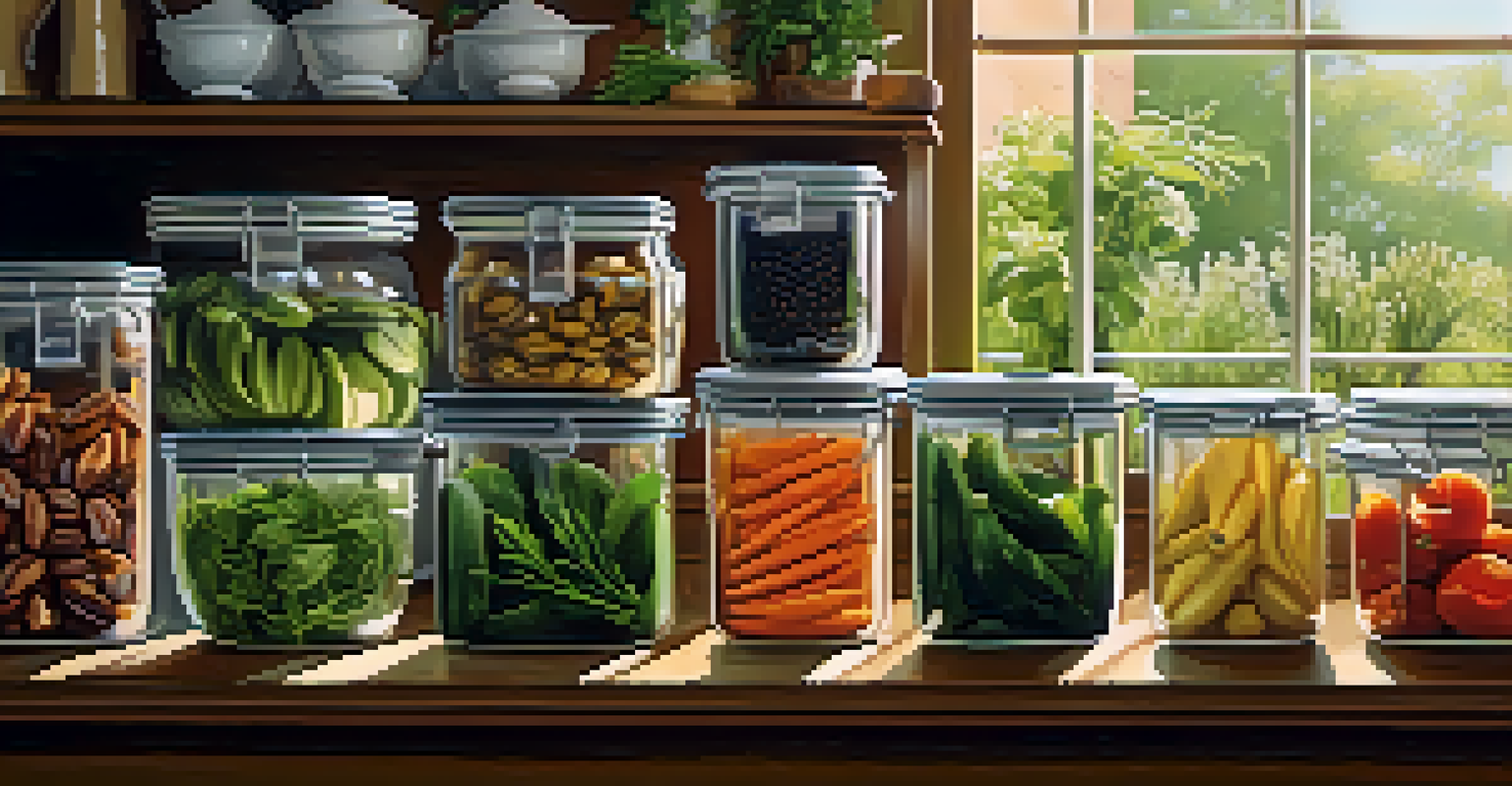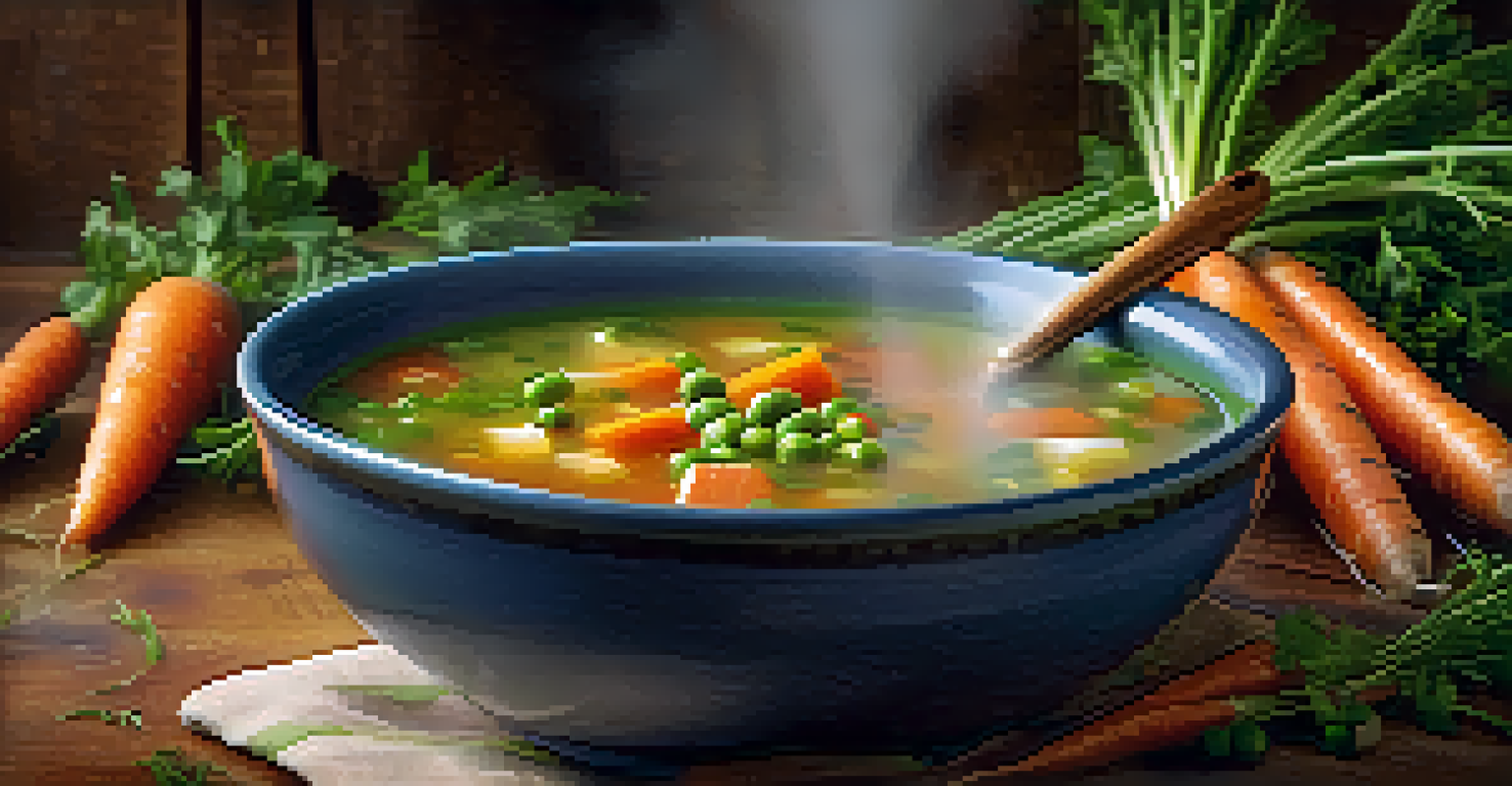Storing and Reheating Vegetarian Meals for Maximum Freshness

The Importance of Proper Storage for Vegetarian Meals
Proper storage is crucial for maintaining the freshness of your vegetarian meals. Just like how a garden thrives on the right conditions, your meals need a suitable environment to keep their flavors and nutrients intact. Without proper storage, even the most delicious dishes can spoil quickly, leading to waste and disappointment.
Food is not just what we eat, but how we store and prepare it that makes a meal truly enjoyable.
Vegetarian meals often contain perishable ingredients like fresh vegetables, legumes, and grains. These ingredients can lose their texture and taste if not stored correctly. By understanding the best practices for storage, you can enjoy your meals at their peak quality, whether you’re keeping leftovers or prepping meals for the week ahead.
Additionally, proper storage can help prevent foodborne illnesses, which can be a concern even with vegetarian dishes. By keeping your meals in airtight containers and at the right temperatures, you not only preserve freshness but also ensure your health and safety.
Choosing the Right Containers for Storage
Selecting the right containers is essential for effective meal storage. Glass jars, plastic containers, and silicone bags all have their advantages, but it's important to choose materials that won't leach harmful substances into your food. For instance, glass containers are great for reheating, as they can withstand high temperatures without warping.

Consider portion sizes when selecting containers. Smaller containers are ideal for single servings, making it easy to grab a quick meal when you're on the go. On the other hand, larger containers work well for meal prep, allowing you to store multiple servings of your favorite dishes.
Proper Storage Keeps Meals Fresh
Storing vegetarian meals correctly preserves their flavors and nutrients, reducing waste and ensuring safety.
Lastly, look for airtight containers to keep your meals fresh for longer. This prevents moisture from seeping in and keeps out unwanted odors, ensuring that your vegetarian meals stay delicious until you're ready to enjoy them.
Best Practices for Refrigerating Vegetarian Meals
Refrigerating vegetarian meals properly can extend their shelf life significantly. Ensure your meals are cooled to room temperature before placing them in the fridge; this helps prevent condensation, which can lead to sogginess. A good rule of thumb is to refrigerate meals within two hours of cooking to maintain quality.
Leftovers in their container can often be reheated, but they can also be repurposed into something new and exciting.
When storing, label your containers with dates to keep track of freshness. This simple step can save you from eating something that's past its prime. Generally, most vegetarian meals can last in the fridge for about three to five days, depending on the ingredients used.
Moreover, consider the placement of your containers in the fridge. Storing them on middle shelves, where the temperature is most consistent, helps maintain an even chill. Avoid storing meals in the door, as this is the warmest part of the fridge.
Freezing Vegetarian Meals for Long-Term Storage
Freezing is a fantastic way to preserve vegetarian meals for longer periods. When done correctly, freezing can lock in flavors and nutrients, allowing you to enjoy your favorite dishes even weeks later. Foods like soups, stews, and casseroles freeze particularly well and can be a lifesaver on busy days.
Before freezing, ensure your meals are cooled down and packed in suitable containers. Use freezer-safe bags or containers, and try to remove as much air as possible to avoid freezer burn. Portioning meals into individual servings can also make it easier to defrost only what you need.
Choose the Right Containers
Using appropriate containers, like glass or airtight options, helps maintain meal quality and prevents spoilage.
Remember to label your frozen meals with dates and contents. This way, you can easily find what you’re looking for without having to dig through a frozen maze. Most vegetarian meals can be safely stored in the freezer for up to three months for optimal quality.
Reheating Vegetarian Meals Safely and Effectively
Reheating vegetarian meals involves more than just popping them in the microwave. While microwaves are convenient, they can create uneven heating, leaving some parts hot and others cold. For the best results, consider using an oven or stovetop, which can provide more uniform heat distribution.
When reheating, aim to bring your food to a minimum internal temperature of 165°F (74°C) to ensure it's safe to eat. Using a food thermometer can help you accurately check this, especially for dishes that contain multiple ingredients. Stirring your food halfway through the reheating process can also help it heat evenly.
Additionally, if you're reheating meals that were previously frozen, it's best to thaw them in the refrigerator overnight before reheating. This not only helps with even heating but also preserves the texture and flavor of your meals, making them just as delicious as when they were freshly cooked.
Tips for Maintaining Freshness When Reheating
To keep your vegetarian meals tasting fresh when reheating, consider adding a splash of water or broth to the container before heating. This helps retain moisture and prevents dishes from drying out. Covering your container with a lid or microwave-safe wrap can also trap steam and keep your food from becoming rubbery.
If you're reheating a dish with vegetables, try to add fresh herbs or a sprinkle of lemon juice after reheating. This not only enhances the flavor but also gives the dish a fresh touch, making it feel like a brand-new meal. A little creativity can go a long way in keeping your meals exciting.
Creative Uses for Leftovers
Transforming leftover vegetarian meals into new dishes can offer variety and reduce food waste.
Lastly, avoid reheating meals multiple times. Each round of reheating can degrade the quality and flavor, so try to only reheat what you plan to eat. This way, you can ensure that every bite is as delicious as the first.
Creative Ways to Use Leftover Vegetarian Meals
Leftover vegetarian meals can be a treasure trove of inspiration for new dishes. Instead of simply reheating, think about how you can transform those leftovers into something exciting. For instance, leftover vegetable stir-fry can be tossed into a salad or used as a filling for wraps, adding variety to your meals.
Another great idea is to blend leftover soups or stews into smoothies or sauces. This can create a new flavor profile and reduce waste. Plus, it’s a sneaky way to pack more nutrients into your meals without much effort.

You can also consider repurposing grains like quinoa or rice into grain bowls or salads. Adding fresh ingredients such as avocado, nuts, or a zesty dressing can elevate your leftovers, turning them into a delightful new dish that feels anything but recycled.